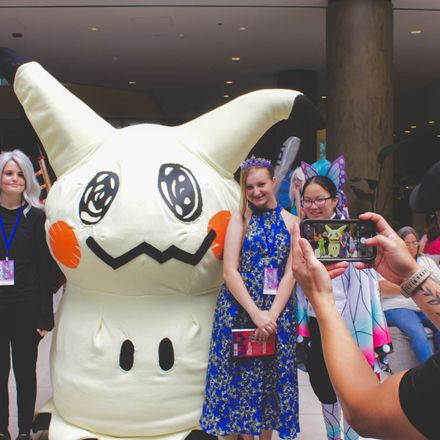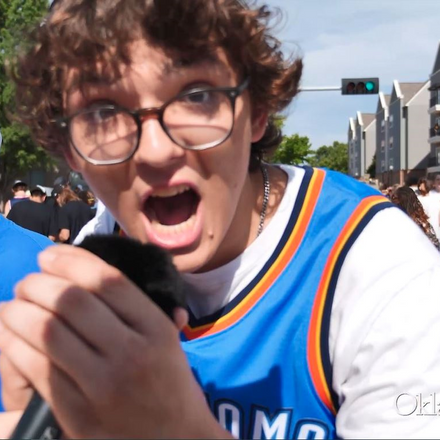Peanuts, Cracker Jacks, and Okies: Oklahoma's baseball history goes deep.
Published June 2019
By Greg Echlin | 15 min read
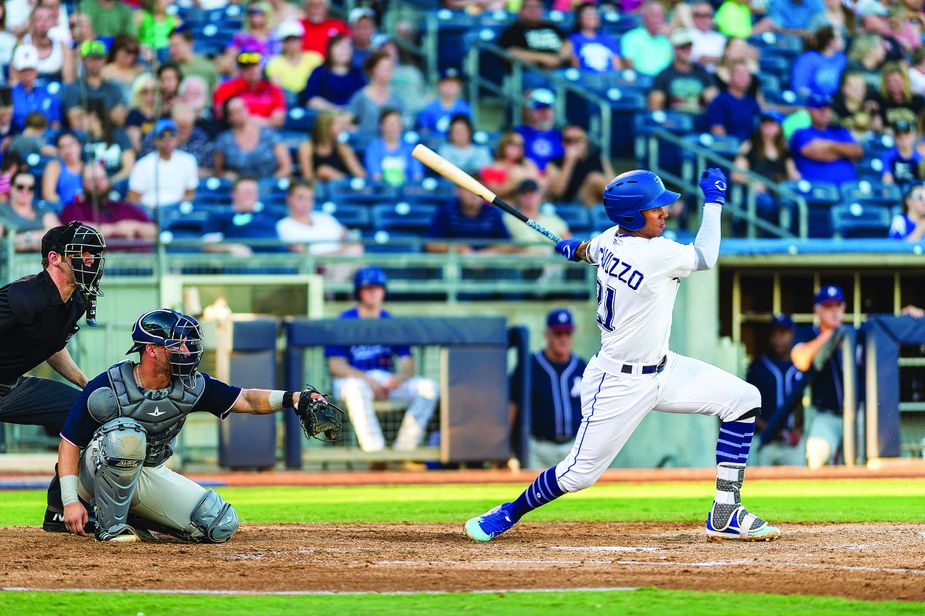
Jacob Scavuzzo played left field for the Tulsa Drillers during the 2018 season before a transfer to El Paso. Minor league players rarely stay in one place for long.
From behind home plate at ONEOK Field, it’s hard not to notice the view of Tulsa at dusk—and baseball’s leisurely pace allows ample time to take it all in. There is the industrialized area between the outfield boundary and the three bustling BNSF railroad tracks. Then, looking toward the left field corner, there are signs of recent growth: the refurbished Greenwood District with bustling commerce and residential projects, where the team’s co-chairmen, brothers Jeff and Dale Hubbard, stay when they’re in town. In the other direction are the city’s shimmering skyscrapers and the Tulsa Arts District.
But when the first pitch crosses home plate and the catcher’s glove pops, it’s hard not to focus on the pristine, manicured Bermuda grass-carpeted diamond with the dirt infield, a mix of 70 percent sand and 30 percent clay. Bats crack, umpires shout calls, the crowd roars. Play ball.
Though Oklahoma gets the most attention for its professional basketball and college football teams, generations of fans have attended professional baseball games in Oklahoma since before statehood. Tulsa’s history with the sport began in 1905 with the Tulsa Oilers of the Missouri Valley League, which eventually transitioned into the old Western Association. In Oklahoma City, baseball began even earlier—in 1904—with the Metropolitans of the Southwest League.
But America’s pastime wasn’t just the property of the big cities. For a long time, several small towns boasted minor-league baseball teams, including Ardmore’s Indians of the Sooner State League; the Uttmen out of Duncan in the Oklahoma State League; and Bartlesville’s Oilers and Pirates, both of the KOM League, the name of which represented Kansas, Oklahoma, and Missouri.
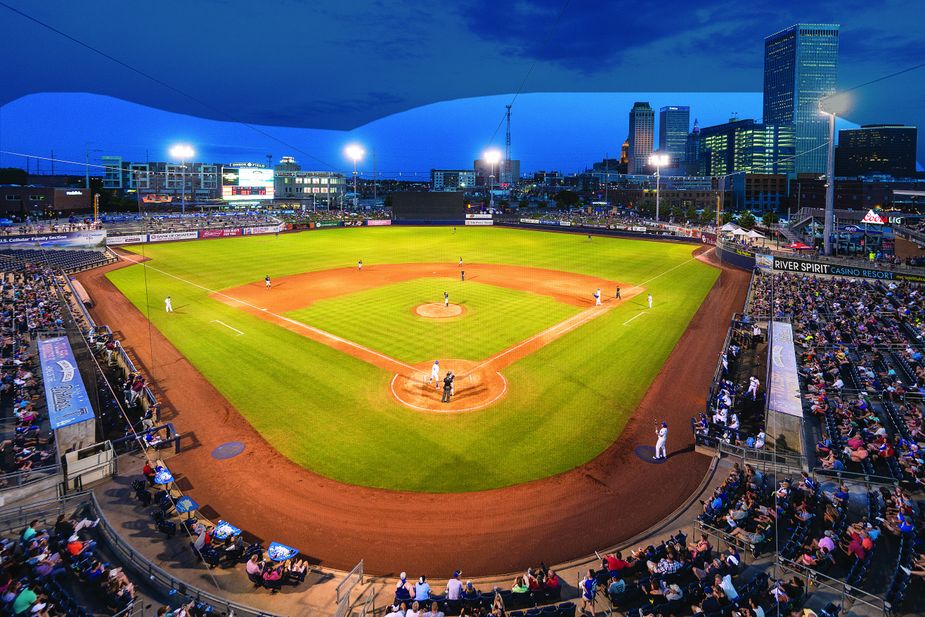
ONEOK Field in Tulsa, home of the Los Angeles Dodgers-affiliated Tulsa Drillers, opened in the historic Greenwood district in 2010. The stadium also is home field for the Tulsa Roughnecks Football Club of the United Soccer League.
Signs of these early bush leagues still remain. In Bartlesville, the Bill Doenges Memorial Stadium once was the home of the Pittsburgh Pirates-affiliated Oilers and Pirates from 1946 to 1952. The stadium still hosts the Bartlesville Bruins’ high school games as well as American Legion teams like the Doenges Ford Indians, the Bartlesville Safari Smiles Warriors 2A, and the Bartlesville United Linen Braves 3A.
Tim Pugh of Collinsville suited up for the Bruins when he was in high school—they won the 5A state championship his senior year—and he went on to pitch for Oklahoma State before going sixth in the 1989 amateur draft. His career took him to the mound for the Cincinnati Reds, the Kansas City Royals, and the Detroit Tigers, with whom he made his final MLB appearance in 1997. But he still looks fondly on his hometown stadium.
“They’ve improved that place over the years,” he says. “It’s one of the nicer parks in the state.”
Pugh’s story resonates in Oklahoma, where many young men have found themselves in the minors—and some in the bigs. Rick Wrona is one of them. The Tulsa native inherited his talent from his father, Walt, who played minor league ball in Tulsa from the late 1940s to 1951.
“After that, he retired here, became an electrician, and raised a family,” Rick says of his father. “So minor-league baseball in Tulsa means a lot to me.”
Though Walt never was called up to the big leagues, Rick made his MLB debut with the Chicago Cubs in 1988 after a successful stint at Wichita State. His career—primarily as a catcher—saw him bouncing between the majors and minors for the Reds, Chicago White Sox, and Milwaukee Brewers before his final stop in Oklahoma City with the team then known as the RedHawks. He retired in 1998 at thirty-four.
Minor-league baseball also has made full-fledged Okies out of some who’ve transplanted here in the course of their careers. When Tyler, Texas, native Lee Tunnell’s fifteen-year career as a pitcher was nearing its end in the late 1980s, he decided he wanted to stay in the game as a coach. He and his wife, Bea, had met as students at Baylor and had had four children together.
“I knew it was the time when they needed to start dropping some roots,” says Tunnell. “I didn’t want to keep moving, so we thought it was the right thing to do to move to Oklahoma City.”
So Tunnell joined the coaching staffs in Oklahoma City and Tulsa and now is the bullpen coach for the Cincinnati Reds. But Oklahoma has become a permanent home for him and his wife. When Bea was a substitute teacher at Putnam City’s Apollo Elementary last year, she told students in her fourth grade class that, since their days at Baylor, she and Lee have lived in thirteen states. They know both the geography and the business of baseball.
“Baseball can be hard on families,” Lee says. “You have to make some tough decisions.”
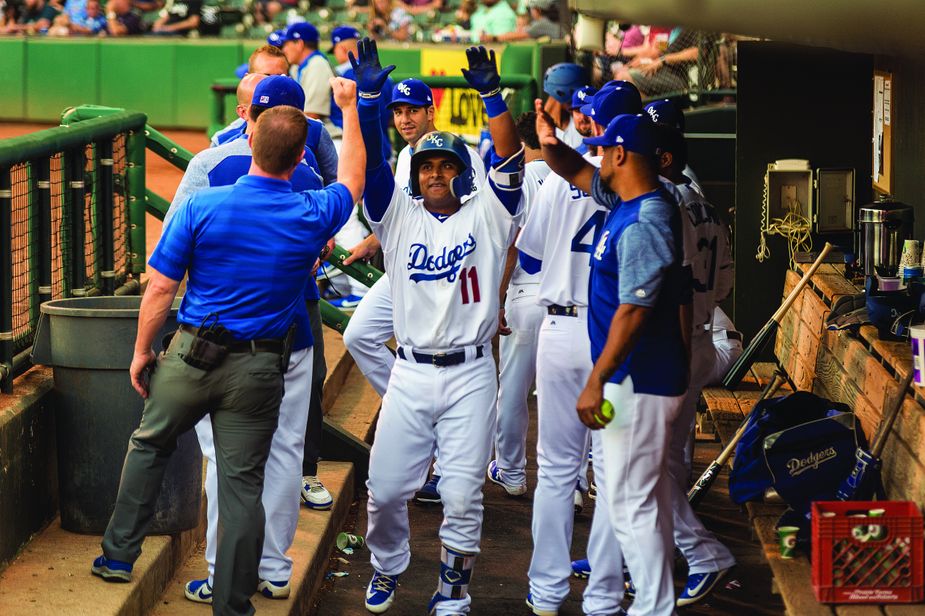
The Dodgers began in 1962 as the 89ers. The team played at All Sports Stadium at the state fairgrounds before moving into Chickasaw Bricktown Ballpark in 1998.
The nexus of baseball in Oklahoma City is Chickasaw Bricktown Ballpark—known as “The Brick”—which opened in 1998. In the generation that has passed since then, major leaguers like Garrett Richards, Michael Fulmer, and Andrew Heaney have counted themselves as Oklahoma City fans. Outside the stadium, they passed the bronze likenesses of Oklahoma-born Hall of Fame legends like Mickey Mantle, Johnny Bench, and Warren Spahn.
Heaney’s first time attending a professional game was at The Brick. The Putnam City High School graduate—and pitcher for the Los Angeles Angels—doesn’t recall the results, but he remembers how he entertained himself at the stadium.
“As a kid, my memories were the little helmets with Dippin’ Dots or one of those inflatable bounce-castle type things,” says Heaney, a 2012 first-round draft pick from OSU who once threw a one-hitter against the Royals on his twenty-seventh birthday in 2015.
Luckily for this future major leaguer, next to the bounce castle was an object that drew his keen interest: the radar gun.
“You would throw two balls, and it would tell you how hard it was,” he says. “If you could guess the velocity right on the third one, they’d give you an MLB souvenir helmet. I was really good at that.”
Heaney achieved the dream to which so many aspire: making it to the bigs. But doing so means gutting it out and paying dues in the minors, riding buses through distant towns, waiting sometimes for years to be called up. General wisdom in the business is that those who go the furthest are those who adjust best to the minor league’s hectic pace and unpredictability.
Edwin Rios thought he had adapted nicely. The Los Angeles Dodgers prospect was drafted in 2015 and was one step away from his dream gig as a big league third baseman after his promotion from Tulsa to Oklahoma City’s Dodgers in 2017. On the verge of what looked to be a breakthrough year in 2018, Rios made living arrangements any minor leaguer would die for: He moved into the Tunnells’ vacant rental house in Oklahoma City and brought then-teammates Henry Ramos and Cael Brockmeyer along.
Rios was hurt during spring training and was forced to go to Arizona for rehabilitation, but Ramos and Brockmeyer took over the house, which featured 2,700 square feet and a pool. Despite the choice bachelor conditions, these career-minded athletes didn’t turn their new digs into a wild party pad. The fact is, during the season, minor leaguers are away from home as often as not.
“We’ve got a lot of time on the road, so when we’re here, we use the kitchen,” says Ramos, who was drafted by the Boston Red Sox in 2010. “We don’t do a lot of stuff here.”
In fact, he says, he usually left the house by 11:30 a.m. for a 7:05 p.m. game in Bricktown so he could spend time with the trainer before batting practice. As is typical for minor leaguers trying to work their way up, Brockmeyer found himself transferred from Oklahoma City to Tulsa in mid-May 2018, just about the same time Rios finished his rehabilitation and was able to share the house with Ramos for the rest of the season.
But moves like these are common among minor leaguers; the life of a baseball player working his way toward the ultimate dream is a peripatetic one. Players in Oklahoma’s minor league teams were especially excited in 2017 and 2018 as the L.A. Dodgers, their parent organization, found itself playing in the World Series for the first time since 1988. The prospects fans follow at ONEOK Field and The Brick this year may be making history in the big show in the future.
Though players may come and go, the tradition of minor league baseball in Oklahoma endures, and that’s largely down to the culture of the teams’ organizations. After all, a lot of forces come together for a game to happen, and the sport’s roots are deep in Oklahoma’s red dirt.
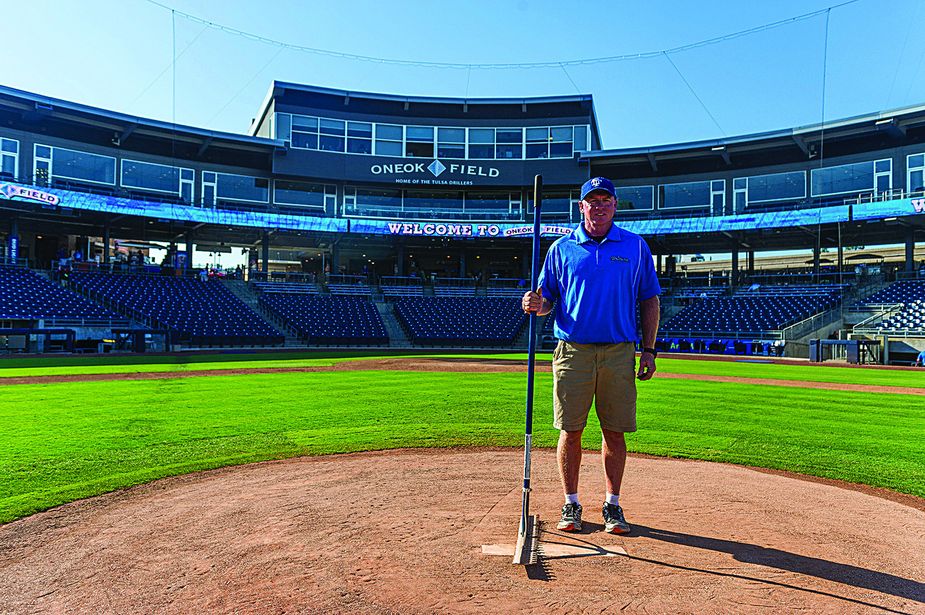
Gary Shepherd has served as head groundskeeper at ONEOK Field for twenty years. He has been with the Drillers organization since 1993.
As the Drillers’ head groundskeeper since 1999, Gary Shepherd knows something about deep roots. While working for Lawn America in 1993, Shepherd answered an ad for an opening at the old Drillers’ stadium near the Tulsa Fairgrounds. The field’s turf had just been replaced by grass.
“I knew from day one that it would be something I would enjoy doing and would want to do on a full-time basis,” says Shepherd, who grew up in Henryetta, another small Oklahoma town that boasted a Western Association professional team in 1914 and from 1920 to ’23.
Even under a late June azure sky—eighty-nine degrees with 40 percent humidity at the game’s start—Shepherd knows the weather in Oklahoma can turn, and he has to be ready. In case the skies darken under an imminent storm, he and a few tie-wearing staffers and interns in the Drillers organization put on what Shepherd calls their “tarp clothes.” They stand ready to assist the six-person grounds crew as it pulls a tarpaulin over the infield.
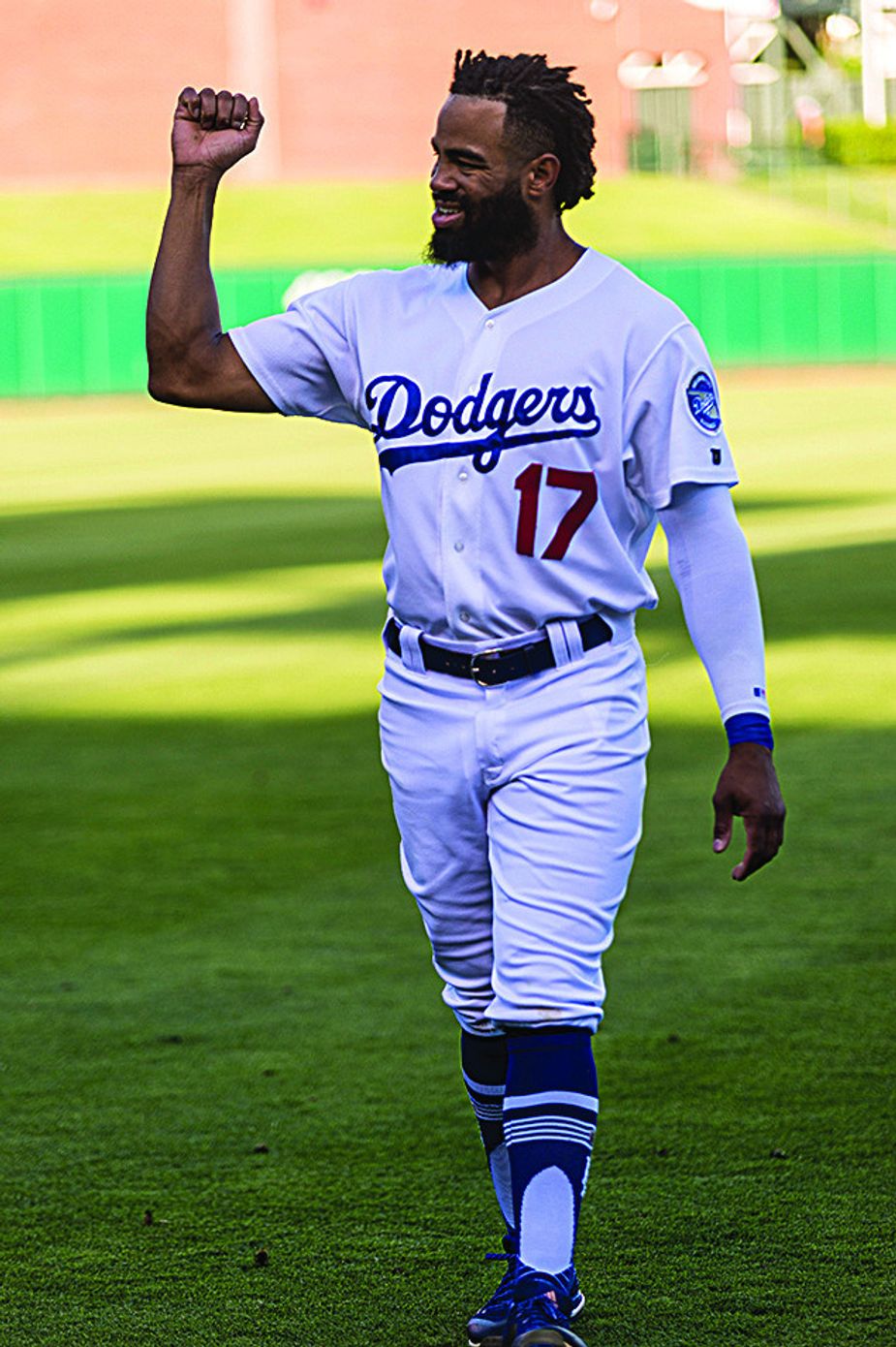
Edwin Rios was drafted by the Dodgers organization in 2015 and played for the Tulsa Drillers and Oklahoma City Dodgers before moving up to the big leagues with the Los Angeles Dodgers in 2019.
“April and May are definitely the toughest to deal with,” Shepherd says. “In the summertime, you get pop-up storms, and they can be worse than a storm you see coming from the west side of the state.”
Tonight, the skies remain calm even as the action on the field does not. But when it ends, the air above ONEOK field is filled with excitement as a post-game fireworks show lights up the Tulsa sky.
As fans file out, Shepherd and his crew get word of an incoming late-night thunderstorm. They clean up, unroll the tarp, and patch the dirt. Staffers change out of their work clothes and head home.
With everything anchored, Shepherd turns off the lights and goes home shortly before midnight. The field awaits the storm, and once it’s passed, the cleats of the transient, big-dreaming young players will mar it once again.
Play ball.
